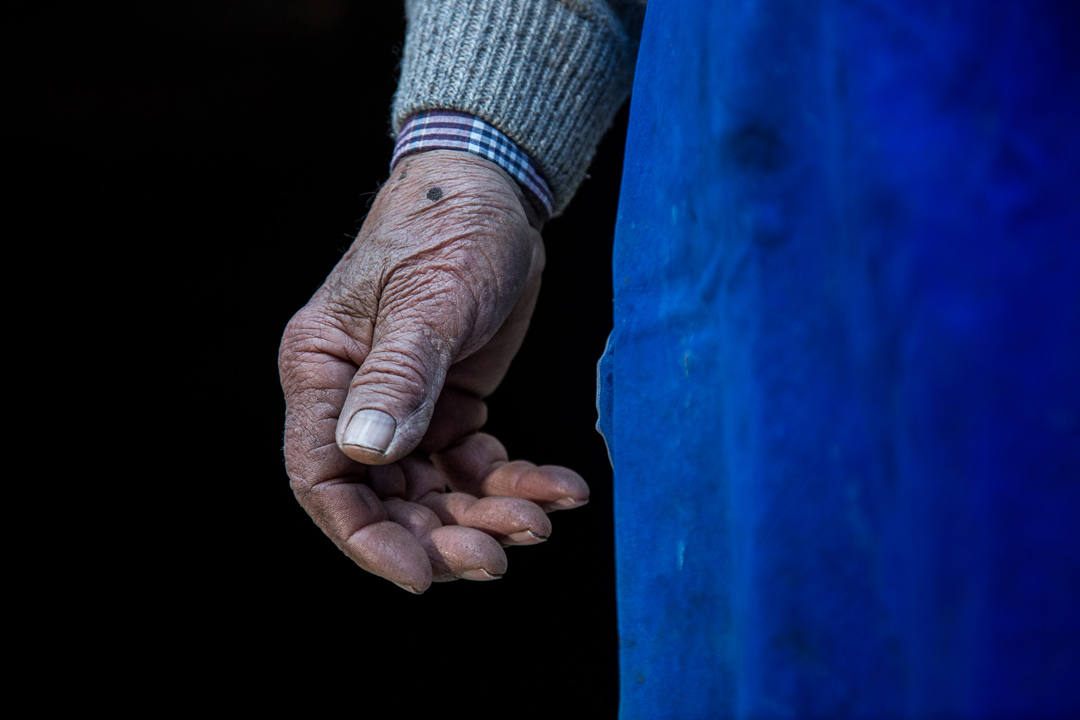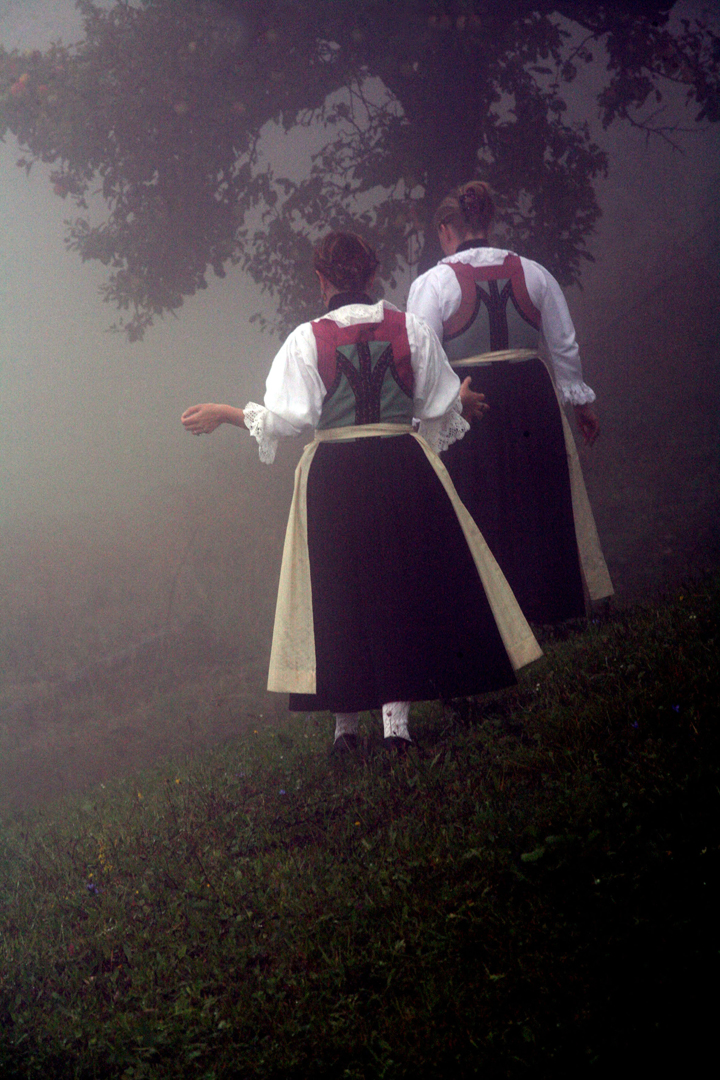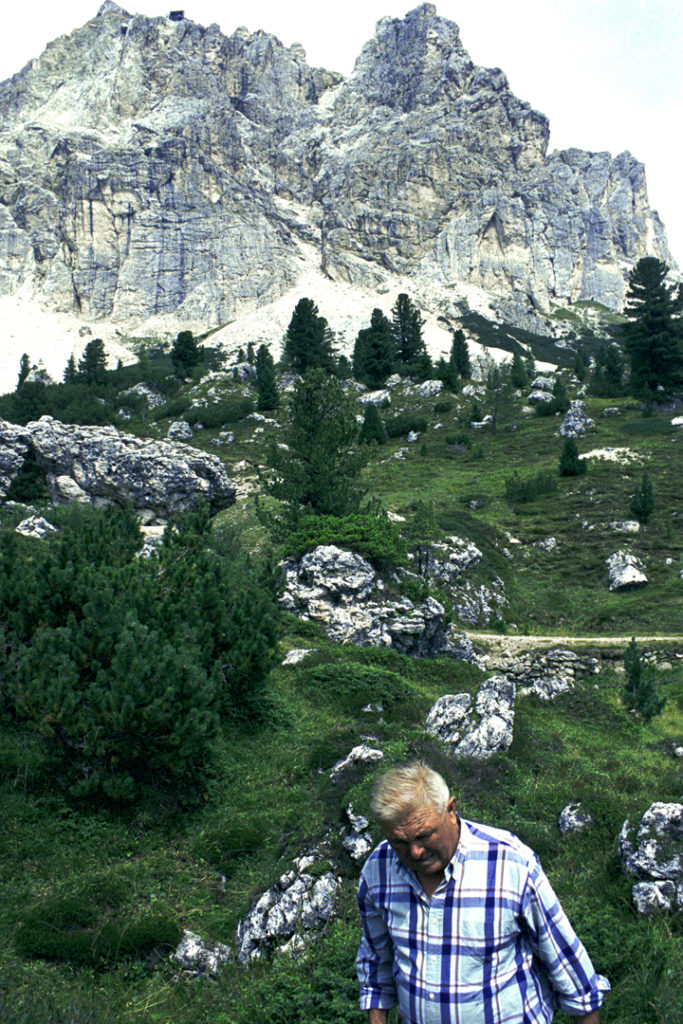
Dazzling summer days, misty wintery mornings. Regardless of the season, a tireless blue figurine travels across the landscape, up and down the ridge of hills, inside and outside of fog banks hanging low on the crops. What you see is a South Tyrolean farmer wearing his « blauer Schurz »: the bright blue apron, the iconic cloth shield of women and men working in the fields.
Versatile since the very beginning, the Schurz was worn to protect clothes whilst also serving as a pouch, a tissue, a seed tray and a symbol expressing one’s belonging to a specific professional category. Usually constituted of two parts, a « Firtig » or frontal tissue, and a « Brüstl », in South Tyrol, the Blauer Schurz, made by the iconic blue cotton, is an everyday staple for men from 5 up to 65 years of age. Each Schurz is decorated with embroidered symbols, words or images and is also worn during Sunday Mass or on market days, to strengthen one’s cultural roots socially.

The « Stube » is the most important room of Tyrolean houses, where life meddles with liturgy; in the same environment that has been a shelter for tired farmers, a kitchen for family gatherings, a knitting room for women, a playground for children, a bedroom for servants, a smoking room for local nobility and a chapel for vigils in honour of the deceased.
A material portrait of the people inhabiting it, the Stube always includes a number of staple elements: a central stove, simple or embellished with tiles, an « Eckbank », a bench running along the stove, a large table oriented to the South for a longer exposure to light, numerous cushions, covers and cloths knit by the women of the household and an altar for prayer. Crammed with crosses, ex-voto, holy pictures and other paraphernalia, this corner of the room is dressed with tablecloths embroidered by women with well-wishing texts, seeking grace after a loss or illness and expressing gratitude for prosperity and the preservation of health.
